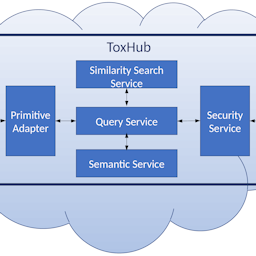Guidelines for FAIR sharing of preclinical safety and off-target pharmacology data
Main Article Content
Abstract
Pre-competitive data sharing can offer the pharmaceutical industry significant benefits in terms of reducing the time and costs involved in getting a new drug to market through more informed testing strategies and knowledge gained by pooling data. If sufficient data is shared and can be co-analyzed, then it can also offer the potential for reduced animal usage and improvements in the in silico prediction of toxicological effects. Data sharing benefits can be further enhanced by applying the FAIR Guiding Principles, reducing time spent curating, transforming and aggregating datasets and allowing more time for data mining and analysis. We hope to facilitate data sharing by other organizations and initiatives by describing lessons learned as part of the Enhancing TRANslational SAFEty Assessment through Integrative Knowledge Management (eTRANSAFE) project, an Innovative Medicines Initiative (IMI) partnership which aims to integrate publicly available data sources with proprietary preclinical and clinical data donated by pharmaceutical organizations. Methods to foster trust and overcome non-technical barriers to data sharing such as legal and IPR (intellectual property rights) are described, including the security requirements that pharmaceutical organizations generally expect to be met. We share the consensus achieved among pharmaceutical partners on decision criteria to be included in internal clearance procedures used to decide if data can be shared. We also report on the consensus achieved on specific data fields to be excluded from sharing for sensitive preclinical safety and pharmacology data that could otherwise not be shared.
Article Details

This work is licensed under a Creative Commons Attribution 4.0 International License.
Articles are distributed under the terms of the Creative Commons Attribution 4.0 International license (http://creativecommons.org/licenses/by/4.0/), which permits unrestricted use, distribution and reproduction in any medium, provided the original work is appropriately cited (CC-BY). Copyright on any article in ALTEX is retained by the author(s).
Briggs, K. (2018). Is preclinical data sharing the new norm. Drug Discov Today 23, 499-502. doi:10.1016/j.drudis.2016.05.003
Cave, A., Brun, N. C., Sweeney, F. et al. (2020). Big data – How to realize the promise. Clin Pharmacol Ther 107, 753-761. doi:10.1002/cpt.1736
Chambers, J., Davies, M., Gaulton, A. et al. (2013). UniChem: A unified chemical structure cross-referencing and identifier tracking system. J Cheminform 5, 3. doi:10.1186/1758-2946-5-3
Chen, W. L., Leland, B. A., Durant, J. L. et al. (2011). Self-contained sequence representation: Bridging the gap between bioinformatics and cheminformatics. J Chem Inf Model 51, 2186-2208. doi:10.1021/ci2001988
Corti, L., Van den Eynden, V., Bishop, L. et al. (eds.) (2019). Managing and Sharing Data: A Guide to Good Practice. 2nd edition. Essex: UK Data Archive. https://www.ukdataservice.ac.uk/manage-data/handbook.aspx
Drew, P., Thomas, R. and Capella-Gutierrez, S. (2019). PP07: Consolidating study outcomes in a standardised, SEND-compatible structure. FDA/PHUSE US Computational Science Symposium, June 9-11 2019. Silver Spring, Maryland. https://www.lexjansen.com/css-us/2019/PP07.pdf
EU – European Union (2016). Regulation 2016/679 on the protection of natural persons with regard to the processing of personal data and on the free movement of such data, and repealing Directive 95/46/EC. OJ L119, 1-88. https://eur-lex.europa.eu/eli/reg/2016/679/oj
Keenan, C. M., Baker, J., Bradley, A. et al. (2015). International harmonization of nomenclature and diagnostic criteria (INHAND): Progress to date and future plans. Toxicol Pathol 43, 730-732. doi:10.1177/0192623314560031
Lamprecht, A. L., Garcia, L., Kuzak, M. et al. (2020). Towards FAIR principles for research software. Data Sci 3, 37-59. doi:10.3233/DS-190026
Lewis, R. W., Billington, R., Debryune, E. et al. (2002). Recognition of adverse and nonadverse effects in toxicity studies. Toxicol Pathol 30, 66-74. doi:10.1080/01926230252824725
Philipson, J. (2019). Identifying PIDs playing FAIR. Data Sci 2, 229-244. doi:10.3233/DS-190024
Pinches, M. D., Thomas, R., Porter, R. et al. (2019). Curation and analysis of clinical pathology parameters and histopathologic findings from eTOXsys, a large database project (eTOX) for toxicologic studies. Regul Toxicol Pharmcol 107, 104396. doi:10.1016/j.yrtph.2019.05.021
Ram, S. and Liu, J. (2009). A new perspective on semantics of data provenance. Proceedings of the First International Conference on Semantic Web in Provenance Management. CEUR Workshop Proceedings 526, 35-40. Washington DC: CEUR-WS.org. http://ceur-ws.org/Vol-526/InvitedPaper_1.pdf
Ravagli, C., Pognan, F. and Marc, P. (2017). OntoBrowser: A collaborative tool for curation of ontologies by subject matter experts. Bioinformatics 33, 148-149. doi:10.1093/bioinformatics/btw579
Steger-Hartmann, T., Kreuchwig, A., Vaas, L. et al. (2020). Introducing the concept of virtual control groups into preclinical toxicology testing. ALTEX 37, 343-349. doi:10.14573/altex.2001311
US – United States (1996). Health Insurance Portability and Accountability Act of 1996. Public Law 104-191. 110 Stat. 1936. https://www.govinfo.gov/content/pkg/PLAW-104publ191/pdf/PLAW-104publ191.pdf
Warr, W. A. (2011). Representation of chemical structures. Wiley Interdiscip Rev Comput Mol Sci 1, 557-579. doi:10.1002/wcms.36
Wilkinson, M. D., Dumontier, M., Aalbersberg, I. J. et al. (2016). The FAIR guiding principles for scientific data management and stewardship. Sci Data 3, 160018. doi:10.1038/sdata.2016.18
Wise, J., de Barron, A. G., Splendiani, A. et al. (2019). Implementation and relevance of FAIR data principles in biopharmaceutical R&D. Drug Discov Today 4, 933-938. doi:10.1016/j.drudis.2019.01.008
Zhang, T., Li, H., Xi, H. et al. (2012). HELM: A hierarchical notation language for complex biomolecule structure representation. J Chem Inf Model 52, 2796-2806. doi:10.1021/ci3001925


